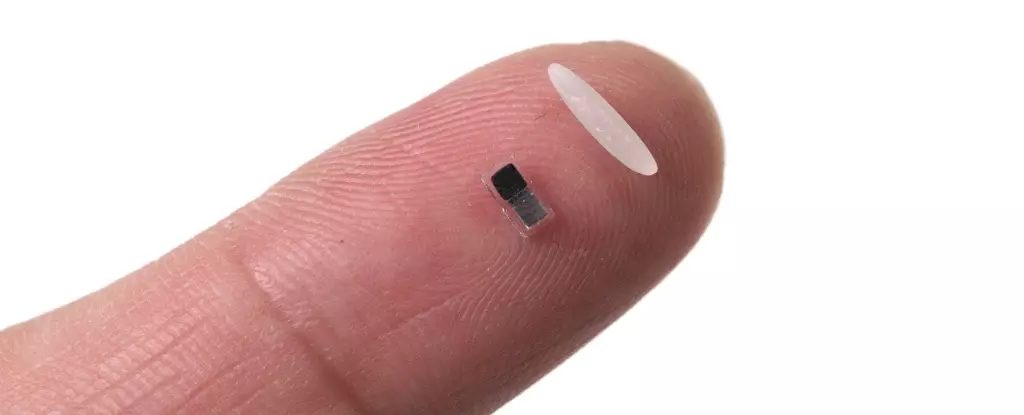In a remarkable leap forward for cardiovascular medicine, researchers have unveiled the world’s smallest pacemaker, a revolutionary device that is set to transform how temporary heart regulation is approached. Compact and efficient, this pacemaker is comparable in size to a grain of rice and can be injected directly into the body, controlled through light, and is designed to dissolve after fulfilling its purpose. While this technology is still years away from being available for human patients, the implications of its development are profound, potentially redefining how physicians treat heart complications in vulnerable populations.
The motivation behind creating this device stems largely from the pressing need for effective temporary heart regulation in children born with congenital heart defects. Recent studies indicate that approximately one percent of newborns face these challenges, often necessitating immediate interventions post-surgery. For adults as well, the ability to restore a normal heartbeat without invasive procedures opens up new avenues of recovery, significantly improving patient outcomes.
Current Practices and Their Limitations
Under current medical practices, patients requiring temporary pacemakers undergo additional surgery where electrodes are sewn to the heart, linked to external devices that deliver electrical impulses to regulate heartbeat. This process is not only cumbersome but carries risks of complications, including damage during removal of these devices. The tragic case of Neil Armstrong, who suffered fatal internal bleeding after the removal of his temporary pacemaker, highlights the urgent need for alternative solutions.
The newly developed pacemaker eliminates these risks by being wireless and biocompatible. At an impressively small size — only 1 millimeter thick and 3.5 millimeters long — it can be easily injected into the body, minimizing trauma to the patient and simplifying recovery. This could potentially usher in an era where patients no longer face long-term consequences from invasive devices.
Pioneering Technology Behind the Pacemaker
The scientific innovation does not stop at size. The pacemaker operates through a sophisticated process involving light detection and electrochemical energy conversion. A soft patch worn on the patient’s chest is designed to monitor heart rhythms; when an irregularity is detected, it emits light signals that instruct the pacemaker on how to respond effectively. This groundbreaking method utilizes a galvanic cell, which generates electrical pulses from the body’s own fluids, allowing the pacemaker to operate independently and efficiently.
Initial tests have shown success across various animal models, such as mice, rats, pigs, and dogs, in addition to human heart tissue samples. The predictive timeline for human trials, estimated to commence in two to three years, adds a sense of urgency and excitement around this technological advancement. Under the guidance of John Rogers from Northwestern University, the team has also launched a startup aimed at accelerating these tests, underscoring the potential commercial and societal impact of their innovation.
A Vision for the Future of Medicine
The implications of this miniature pacemaker stretch far beyond cardiac care. Researchers envision that the foundational technologies utilized in this device could facilitate advancements in various medical domains, including nerve regeneration, wound healing, and the development of smart implants that integrate more effectively within the human body. This broad potential positions the new pacemaker not just as a solution for a singular issue but as a catalyst for a range of transformative medical breakthroughs.
Bozhi Tian, a peer in the field who has experimented with light-activated pacemakers, declared this breakthrough a significant advancement in bioelectronic medicine, emphasizing its potential to revolutionize the management of both temporary pacing and broader healthcare challenges. The urgency to address heart disease—a leading global cause of mortality—further amplifies the importance of this development.
The emergence of this tiny, dissolvable pacemaker signifies a pivotal moment in medical innovation. As researchers continue to refine this technology, its potential applications could represent a paradigm shift not only in cardiology but across the entire spectrum of healthcare, promising not just improved outcomes but also a more humane approach to patient treatment.


Leave a Reply